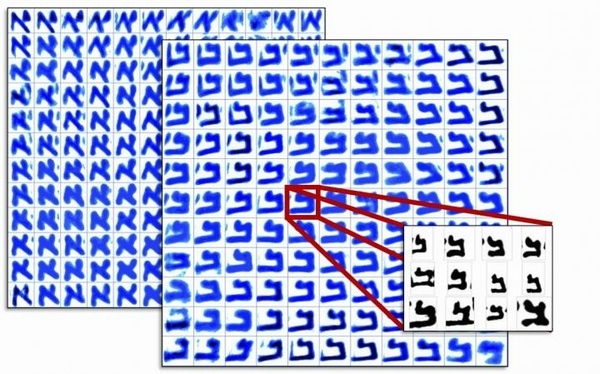No one knows who printed most older works, for the Christian Bible it was anonymous monks, and the Dead Sea Scrolls also contain no attribution, but there has been speculation about who may have written them. Some sought to at least connect them by handwriting.
A new analysis of the Great Isaiah Scroll (1QIsaa) from Qumran Cave 1 used computers to read the handwriting, including how biomechanical traits, like the way in which someone holds a pen or stylus, would affect handwriting.
The handwriting in this scroll seems near-uniform, yet it has been suggested it was made by two scribes sharing a similar writing style. In examining it, they noted that the scroll contains the letter aleph, or "a", over 5,000 times; bordering on impossible for human comparison, but computers don't suffer fatigue or distraction and so are better suited to analyze large datasets, like 5,000 handwritten a's. Digital imaging makes all sorts of computer calculations possible, at the microlevel of characters, such as measuring curvature (called textural), as well as whole characters (called allographic).

Two 12x12 Kohonen maps (blue colourmaps) of full character aleph and bet from the Dead Sea Scroll collection. Image: Maruf A. Dhali, University of Groningen
Neural network
The first hurdle was to train an algorithm to separate the text (ink) from its background (the leather or the papyrus). For this separation, or 'binarization', the team developed a state-of-the-art artificial neural network that can be trained using deep learning. This neural network keeps the original ink traces made by the scribe more than 2,000 years ago intact as they appear on the digital images.
University of Groningen PhD candidate Maruf Dhali performed the first analytical test of this study. His analysis of textural and allographic features showed that the 54 columns of text in the Great Isaiah Scroll fell into two different groups that were not distributed randomly through the scroll, but were clustered, with a transition around the halfway mark.
With the remark that there might be more than one writer, Dhali then handed the data to Professor Lambert Schomaker, who then recomputed the similarities between the columns, using the patterns of letter fragments. This second analytical step confirmed the presence of two different authors. The second scribe shows more variation within his writing than the first, although their writing is very similar.
Handwriting
In the third step, the team produced a visual analysis. They created 'heat maps' that incorporate all the variants of a character across the scroll. Then they produced an averaged version of this character for the first 27 columns and the last 27 columns. Comparing these two average letters by eye shows that they are different. This links the computerized and statistical analysis to human interpretation of the data by approximation, because the heatmaps are neither dependent nor produced from the primary and secondary analyses.
Certain aspects of the scroll and the positioning of the text had led some scholars to suggest that after column 27 a new scribe had started, but this was not generally accepted. The authors believe their quantitative analysis and statistical analyses confirm that
In addition to transforming the palaeography of the scrolls - and potentially other ancient manuscript corpora - this study of the Great Isaiah Scroll opens up a totally new way to analyze the Qumran texts based on physical characteristics. Now, researchers can access the microlevel of individual scribes and carefully observe how they worked on these manuscripts.





Comments